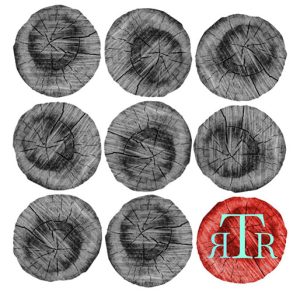Tampa Review – 33/34, 2007
Issue 33/34
2007
Biannual
Deborah Diemont
A glance at the Tampa Review’s website reveals that it is published in hardback, and that it seeks to combine various arts to carry on the “tradition of illuminated manuscripts.” This edition of TR’s “gallery space in print,” offers journalistic photos by Peter Andrew Bosch and David Swanson to illuminate J. Malcolm Garcia’s “Encountering Afghanistan.” An image of Hanneke Beaumont’s bronze sculpture of a runner kneeling fits well with Mark Baumgartner’s story “Some Miles Back.”
A glance at the Tampa Review’s website reveals that it is published in hardback, and that it seeks to combine various arts to carry on the “tradition of illuminated manuscripts.” This edition of TR’s “gallery space in print,” offers journalistic photos by Peter Andrew Bosch and David Swanson to illuminate J. Malcolm Garcia’s “Encountering Afghanistan.” An image of Hanneke Beaumont’s bronze sculpture of a runner kneeling fits well with Mark Baumgartner’s story “Some Miles Back.”
Several essays examine the writer’s life. The writer is considered in terms of her fallible humanity and her need to invent forms to solve the problems of synthesizing material. Poets Joan Cusack Handler and Mary McCue discuss their own writing from a poetry-as-therapy perspective that may make some readers wince. Cusack Handler states, “It is my belief that writers at some point in their lives were forbidden speech, and it is that prohibition coupled with an unsatisfied longing to communicate that compels us to write.” This may be too sweeping of a generalization. Even so, the essay’s strength lies in its courage; by acknowledging her initial doubt, fear, and even envy for “the talents of my peers . . . outdistancing mine,” Cusack Handler emphasizes process. She gives permission to write badly in search of the good – permission all writers need.
The three essays on Mary McCarthy, by Leila Philip, Philip Lopate, and Sandi Wisenberg will reconnect the 1930’s “dark queen of American literature” with her readers or introduce her to those who have not yet had the pleasure. If she has “fallen out of fashion” as suggested, well, she should be back in. Though Philip Lopate and Leila Philip disagree about whether McCarthy was an innovator in the genre of memoir, both admire her risk-taking and willingness to be wrong – her lack of p.c. Says Lopate, “[She] dares to be dislikeable and this is the grit that makes the oyster.” Finally, Sandi Wisenberg invokes McCarthy as a lifesaver, a model for a young writer seeking her way.
Though uneven at times, this hardback journal states convincingly, “I am not disposable!”
[www.tampareview.ut.edu]




